Sustainability

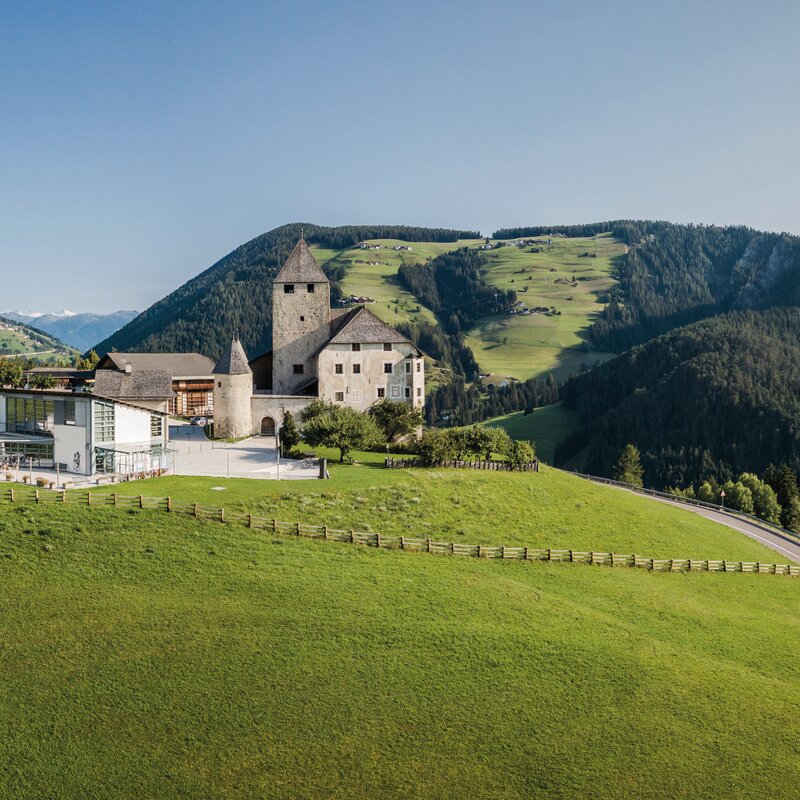
The Ladin people was one of the first to settle the Dolomite region, for reasons of survival, among other things. This is the people that has been responsible for the majority of the care and conservation done over time in an area which has survived almost intact with, all things considered, limited human settlement right up to our own day. In these centuries of life and history - with evidence of pre-Bronze Age life - the Ladins naturally developed both their own identity and their own culture. This identity began to be defined ‘Ladinia’, distinguishing it from the larger and more generic Rhaetic area, with which the inhabitants of the Alps identified as far back as the fifth century BC, generating and refining a very different culture from that of the more northern peoples. Roman domination, ordered by Octavian and implemented by the armies of his stepsons Drusus and Tiberius, alongside military encampments and communication routes to modern day Germany, the famous Via Claudia Augusta, also revolutionized the social and economic system of the Ladins, encompassing agriculture and craftsmanship, introducing a new legal order, improving the economic situation, and modifying the language with the influence of Latin.
Later events and historical twists and turns generated divisions and separations rather than bringing these peoples together. This sometimes diluted a sense of identity which never entirely disappeared, nurtured and preserved constantly as it was by a culture which increased Ladin interest in fine art, music, literature and architecture, cementing a powerful sense of identity between peoples divided by the wars, dictatorships, politics and governments which have succeeded one another over the centuries.
Built at the turn of the last millennium in the face of constraints and delays, today Museum Ladin, in historic Ciastel de Tor in San Martino in Badia, is a thorough overview of Ladin history and culture, while the Ladin cultural institute Micurà de Rü, also in San Martino, deals with scientific, artistic, cultural and educational activities relating to the Ladins and their relationship with other cultures. A Ladin language weekly magazine, “Usc di Ladins”, which is also cutting edge in terms of digital media, completes the area’s cultural information network, reaching almost all Ladin homes and accessible on tablets and smartphones.
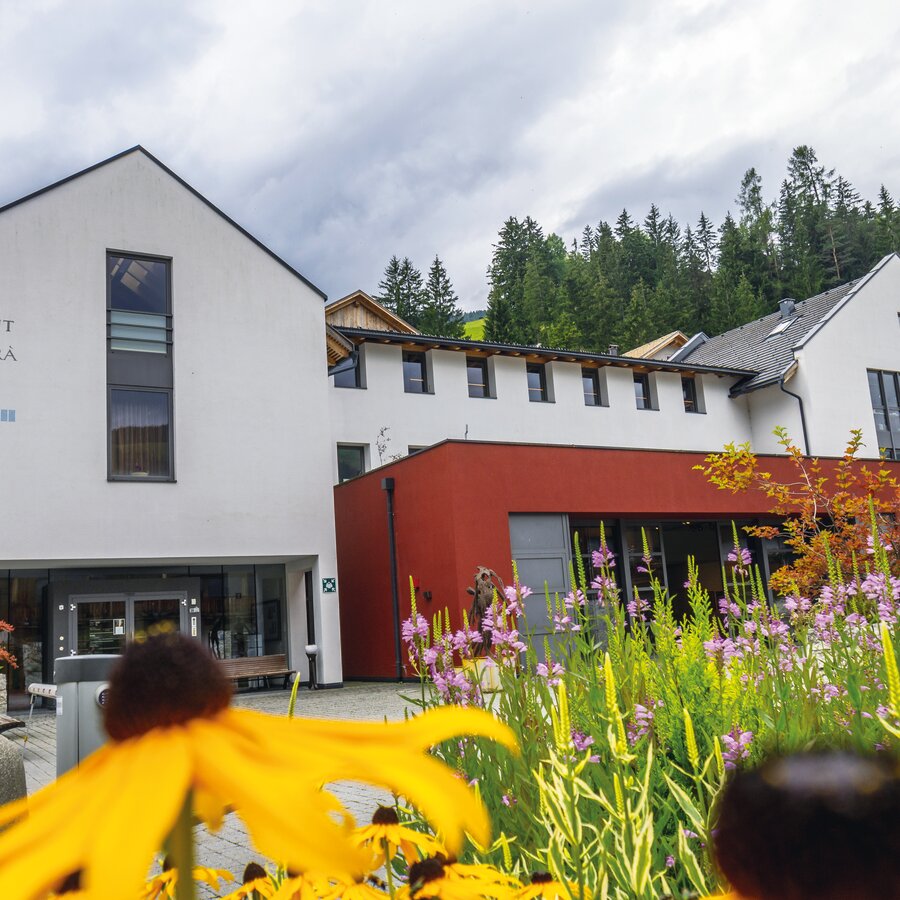
A culture’s mother-tongue is its foremost social and cultural cornerstone; the first language we learn from birth and that which naturally influences our first groups of friends. Its use, protection and conservation also represent a people’s first point of identity and cement the formation of unity. With its over one thousand years of history and development, Ladin is no exception and, for nearly 50 years, it has entrusted its protection to cultural institutes which act as a network, despite being geographically scattered. In the South Tyrolean administrative area the Micurà de Rü Ladin cultural institute in San Martino in Badia is the main reference point for the Ladins of the Gardena, Badia, and Marebbe valleys. Its scientific research and, for members of the public who are interested, its extremely well-stocked and documented multi-language library, are available to all who want to find out more or study it in greater depth.

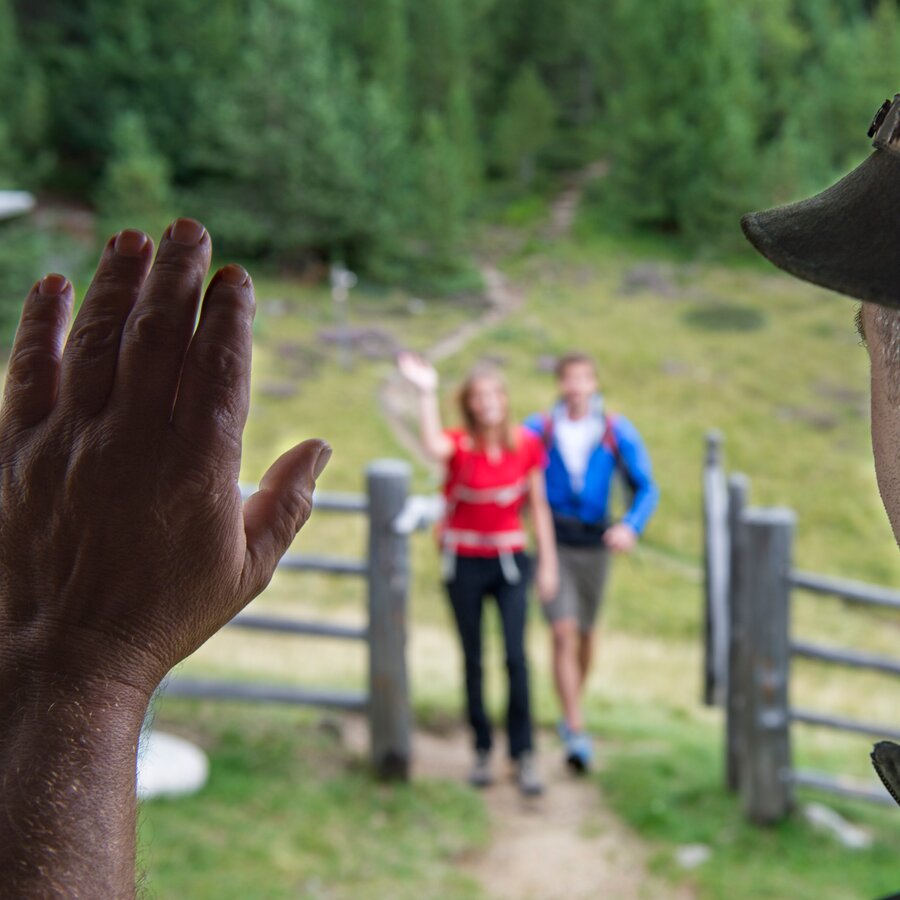
Bun de - Good morning
Bun domisdé - Good afternoon
Bona sëra, bona net – Good evening, good night
A s’odëi – Goodbye
Iolan – Thanks
Co aste pa ennom? – What's your name?
Co vara pa? – How are you?
Ara va bun - I'm well

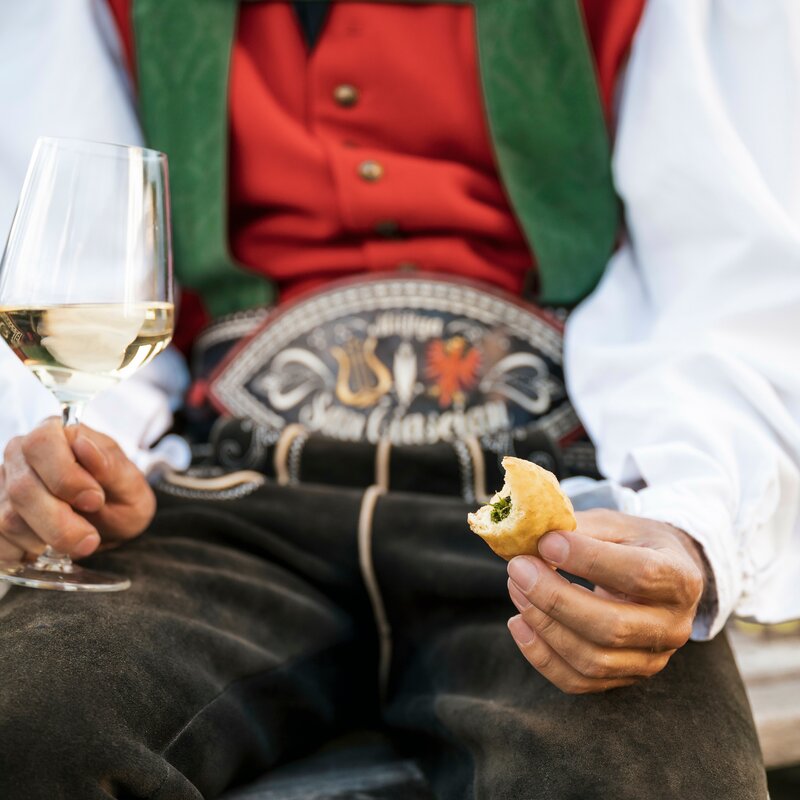
Inspired by a multiplicity of cultures, historic and primarily rural, and thus bound up with the land and its typical local products, over time Ladin cuisine has maintained its ability to impress on any dining table, with its unquestionable naturalness. Dishes to be tasted and tried, exploring the nuanced differences in the cooking methods, which can vary from place to place, are inspiring gourmets and winning new fans. A taste of “panicia” (barley soup) in a bread bowl, or “canci”, large white (blanc) or red (checi) ravioli, perhaps with Marebbe style game meat, is an experience that can satisfy the most demanding of palates. And don’t forget to try the dishes of the young chefs who are giving a creative modern twist with new combinations and great taste to what was once everyone’s grandmother’s cooking. Michelin stars are truly at home in the Badia valley too!
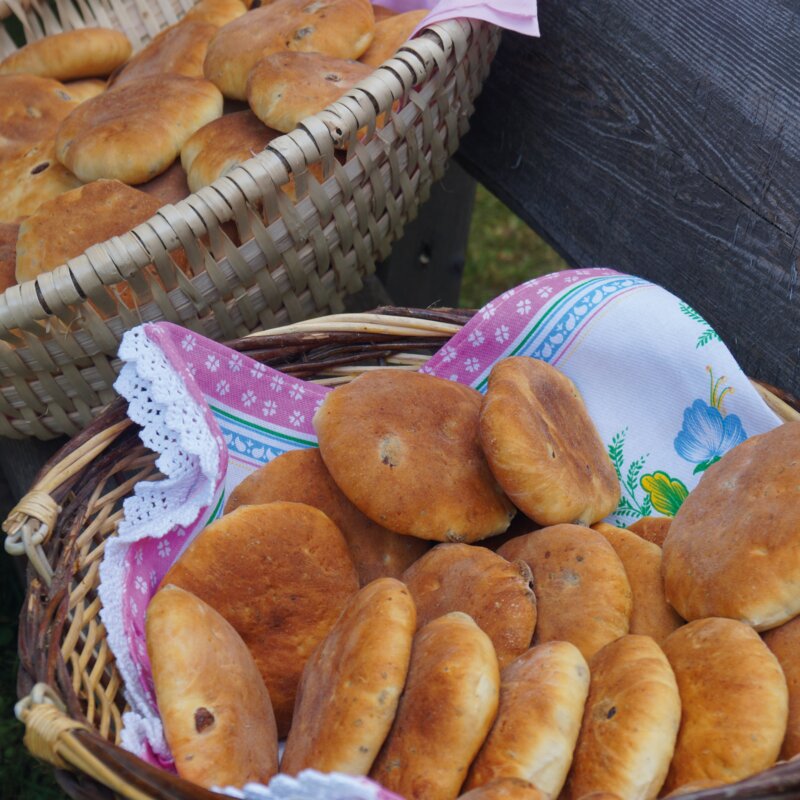
Combine all the ingredients and knead for around 15 minutes until the dough is smooth and elastic. Live to rise for around 20 minutes. Cut into 60-gram pieces and roll them out with a rolling pin to a thickness of 1 cm. Arrange the Crosti on a hot plate covered with greaseproof paper and leave them to rise for a further 10 minutes. Bake at 180°C for around 10-12 minutes. Remove from the oven and spread with sugared water.
Ingredients for approx. 30 Crosti:
1kg of flour, 50g of brewer's yeast, 100g of butter, 3 tablespoons of seed oil, 200g of boiled potatoes, 100g of raisins, the grated rind of 1 lemon, 2 tablespoons of rum, 2 eggs, 100g of sugar, 1 teaspoon of salt, 250ml of milk, 1 sachet of vanilla sugar, 1 teaspoon of aniseed extract.
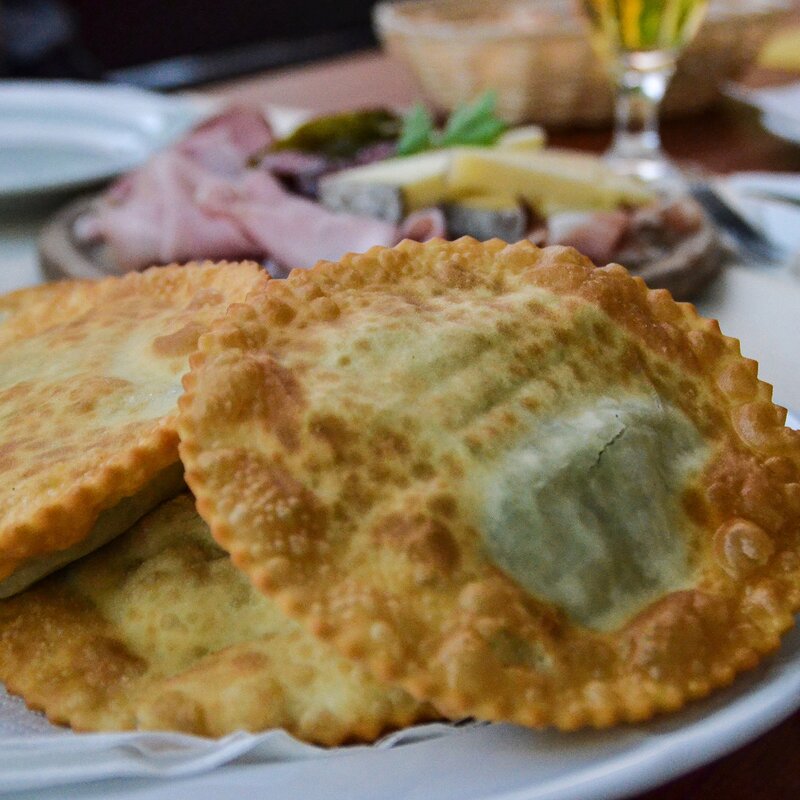
Make a firm dough with the ingredients, cover and leave to rest for an hour.
Shape into a 5cm thick roll, chop it into slices and roll them into thin sheets about the size of the palm of your hand.
Obviously, you can also make these sheets with a pasta-making machine an then cut out circles of a diameter of around 12cm. Place the filling on top, cover with a second pasta disc and press the edges together firmly to close them. Lastly cook the Tultres in boiling oil. The most common fillings are cabbage, ricotta and spinach, or potatoes and ricotta.
Ingredients for the dough for 4 servings:
250g of rye flour, 250g of wheat flour, 1 egg, a pinch of salt, milk as required, 1 drop of seed oil.
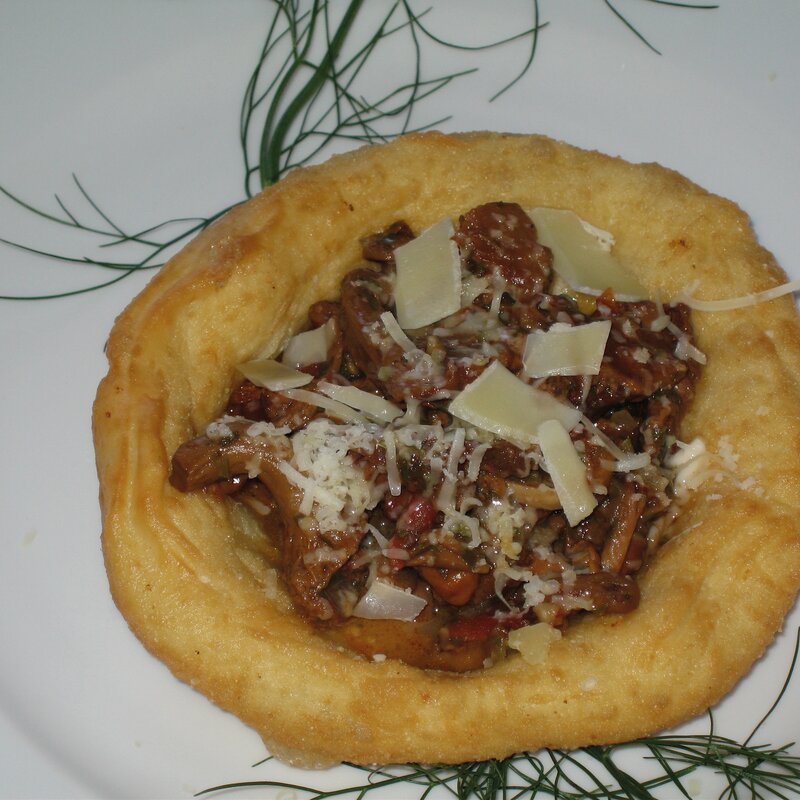
Mix together the milk, yogurt, yeast, and 100g of flour and leave to rise for approx. 10-15 minutes.
Add the rest of the flower, seedoil, eggs and salt and knead well. Cover and leave to rise for a further hour in a warm place. Roll out to a thickness of around 2,5cm and cut out approx. 10cm diameter circles with a glass or round cutter.
Pull these discs out carefully so that they are thinner in the middle with thicker edges. Fry in boilling oil for approx. 2min per side. Finally, put a large spoon of venison or roe deer ragout in the middle of the Crafuns mori and serve.
Ingredients for the dough for 4 servings:
600g of flour (00), 2 eggs, 1/2 a glass of seed oil, 250ml of milk, 40g of brewer's yeast, a pinch of salt, 125g of unsweetened yogurt.
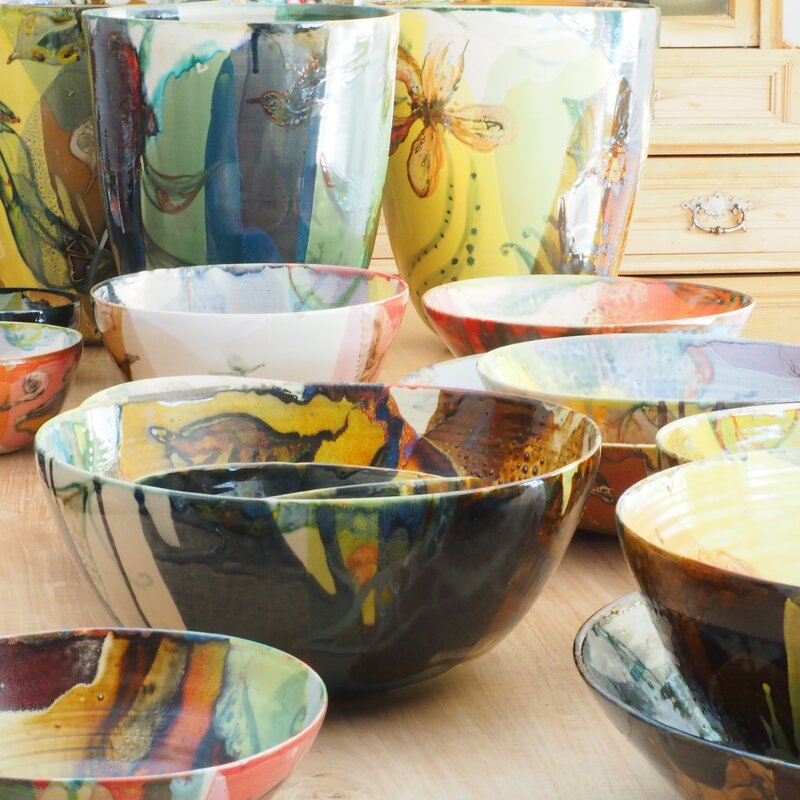
Over the centuries, nature - sometimes fierce and sometimes kind - religion and that sense of beauty that seems to be innate to some more than others, has forged and shaped an uncommon artistic sense in the Ladins, distinguishing them from their immediate neighbors. The need to manage everyday needs by hand breathed life into a flourishing artistic craftsmanship sector, encompassing wrought iron, wooden objects, and furniture which has gradually acquired value over time. Long winter evenings, religious calendar customs, and the mysticism inherent in nature have developed a taste for music and the visual arts, including literature and theater. Absolutely nothing is missing and the Ladin artists’ association EPL (Ert por i Ladins) and the Micurà de Rü Ladin cultural institute in San Martino are the undisputed cornerstones of this. Exhibitions, performances, and events take place regularly across the area. Request an art appointments calendar from the tourist office.

The Ladin region is a land of artists. Polyhedral. And international. The names of Gilbert & George or that of Aldo Canins are enough to testify this, even if we could mention many, many others! However, we shall not venture into this because we are not well-versed enough to explain or clarify the origins of the artistic sensibility that Ladinia has successfully shown to the entire world, which continues to flourish among new and highly gifted generations.
We will instead focus on trying to tell and explain to you one of the most important permanent artistic initiatives that the village of San Martino in Badia have generated and have been hosting for some seasons now: the valley of art, in the Ladin language the "Val dl'Ert". What is this all about? Explaining it in its concepts is perhaps complex, but in the end the result is simple, albeit very interesting. Not only is the "Val dl’Ert" a permanent exhibition and outdoor art gallery, but also an amble and educational pastime. The "Val dl’Ert" is also a theatre; a "hall" of events under the stars that can be reached and entered on foot. All this is situated in the heart of the Dolomites and the Ladin woods, which act as walls, background and scenography! Everything was born from the desire and need to find a permanent exhibition space for the international works and sculptures acquired in several editions of “SMACH.Constellation of Art, Culture & History in the Dolomites”. “SMACH” is a biennial international competition exhibiting works in a dozen different locations across the Val Badia valley.
The place for the outdoor gallery encompassing this collection of works was identified in an Alpine valley about a thirty minutes' walk from the village of San Martino in Badia. However, this location immediately revealed other potentials from which the organisers could not have escaped. Thus, a metamorphosis took place which opened the "Val dl’Ert" to other themes and artistic expressions, a common thread inspired from and for the seven muses, on the trail of the first art competitions. An alternative and winning project, quite like the Ladin artistic spirit.